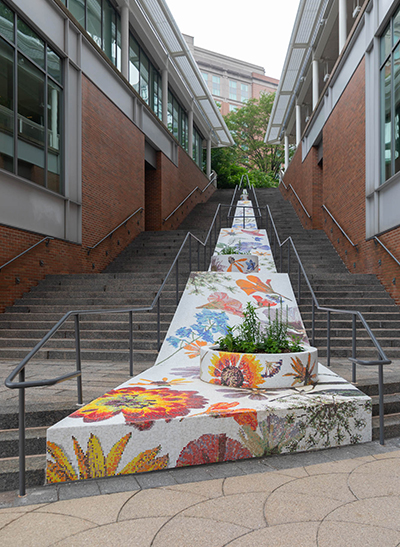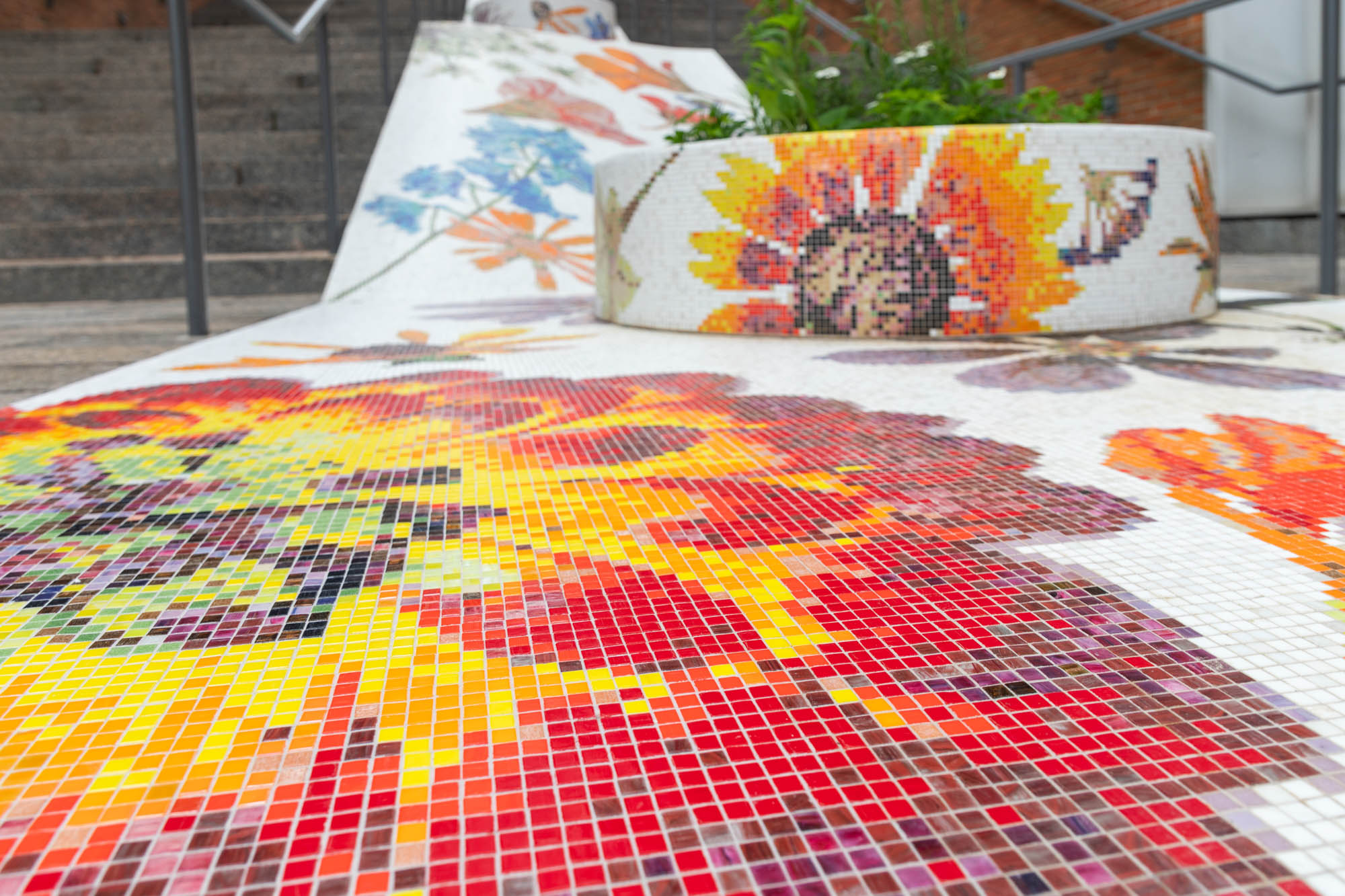Carly GlovinskiOpelske
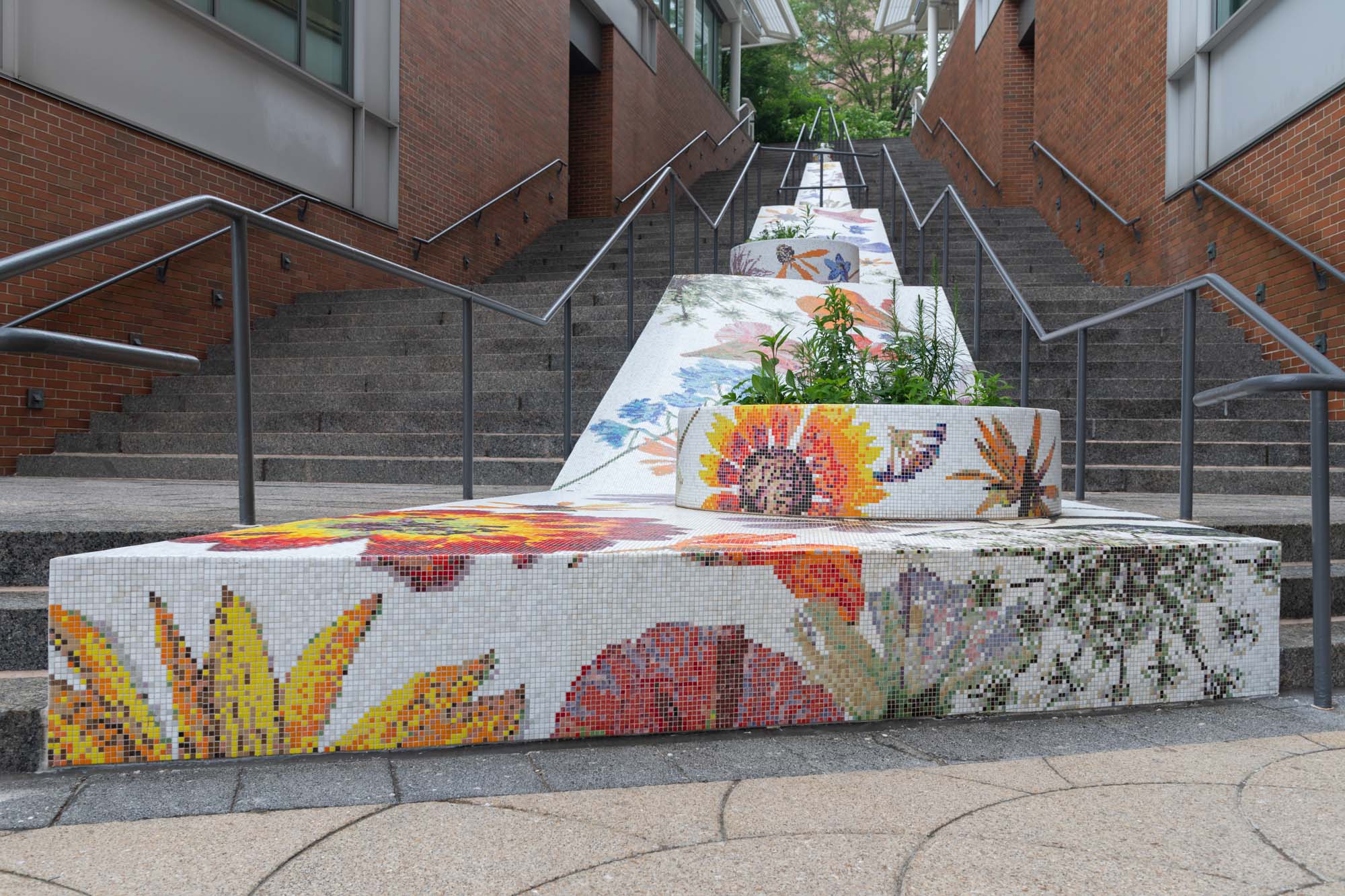
At heart, Maine artist Carly Glovinski is a conservationist. In Opelske, she has captured the fleeting sweetness of the New England garden through a three-story glass mosaic. Descending the staircase, painterly imagery of pressed spring pansies, daffodils, and irises meet with the larger and sunnier blossoms of summer including cosmos, Queen Anne’s lace, and dahlias. For Glovinski, flowers are witnesses to moments in place and time. In big life events, they are congratulations, symbols of love and expressions of sympathy. In our environment, they are natural timekeepers. A pressed flower is both a keepsake and a time capsule.
Glovinski has long found inspiration in the journals of two Maine writers, Celia Thaxter and May Sarton, who similarly kept the tending of a cherished garden central to their creative work and life. The title itself is a tribute to a passage from Thaxter’s An Island Garden (1894), in which she wrote, “the Norwegians have a pretty and significant word, ‘Opelske,’ which they use in speaking of the care of flowers. It means literally ‘loving up’ or cherishing them into health and vigor.”
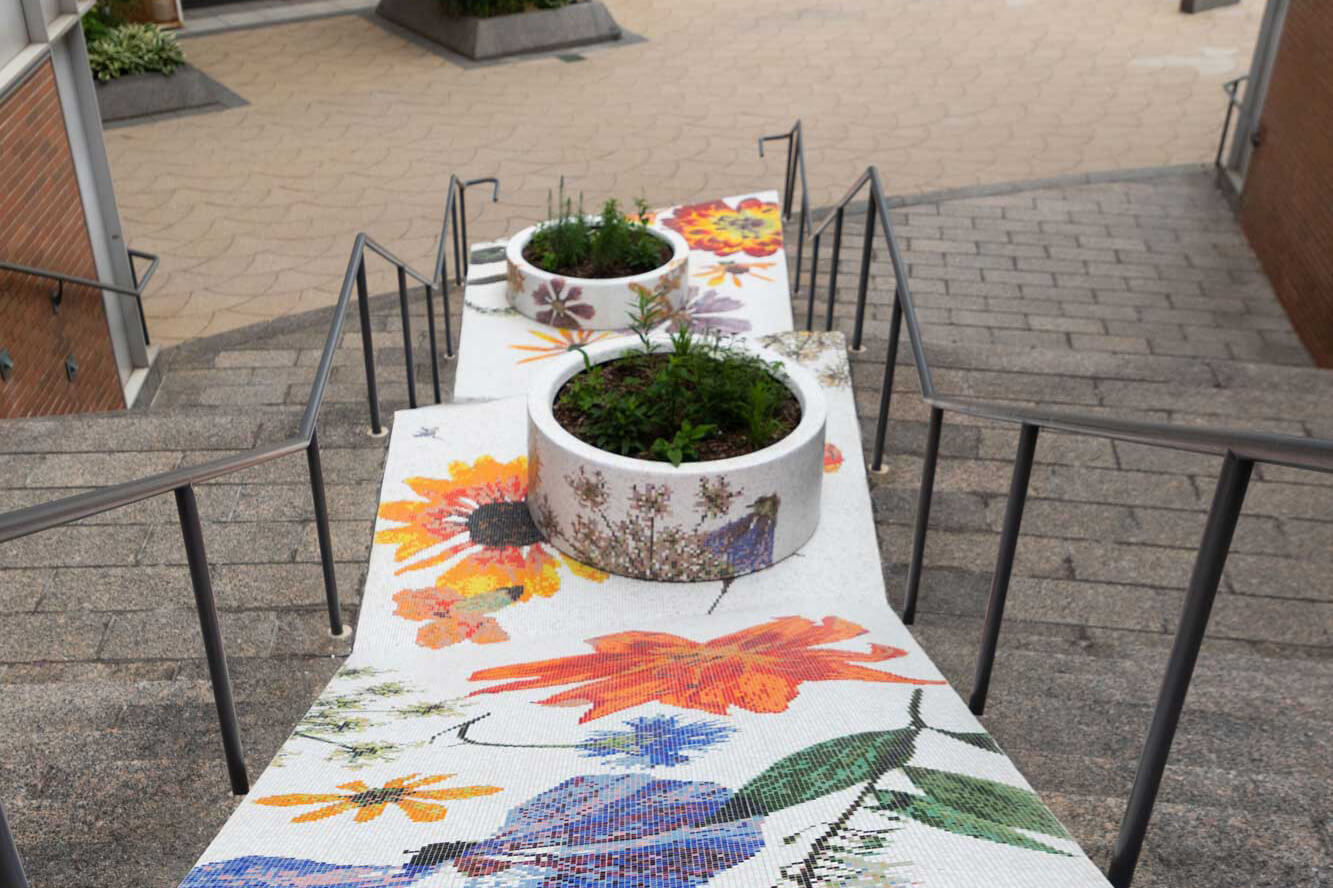
Glovinski’s continued interest in the garden as a metaphor for compressed time fueled a multi-year garden project, where guided by Sarton’s The House by the Sea (1977), she established a new garden where Sarton’s home once stood, creating “rooms of flowers” within the footprint. This “living work” is an homage to the parallels between the labor of care and tending required by a garden and the life of a working artist, and its floral bounty found its way into her latest work, Opelske.
Opelske began with the flowers Glovinski was gifted from loved ones or grew, harvested, and then pressed. Rather than entombing these treasures, she painted the blooms with layers of washy acrylic color on translucent paper which became the basis for her collaboration with Boston-based mosaic design and fabrication studio, Artaic. Using their proprietary software and production processes, Glovinski digitally translated these paintings into a cascading mosaic design that marries New England flora with Boston’s culture of technology and innovation.
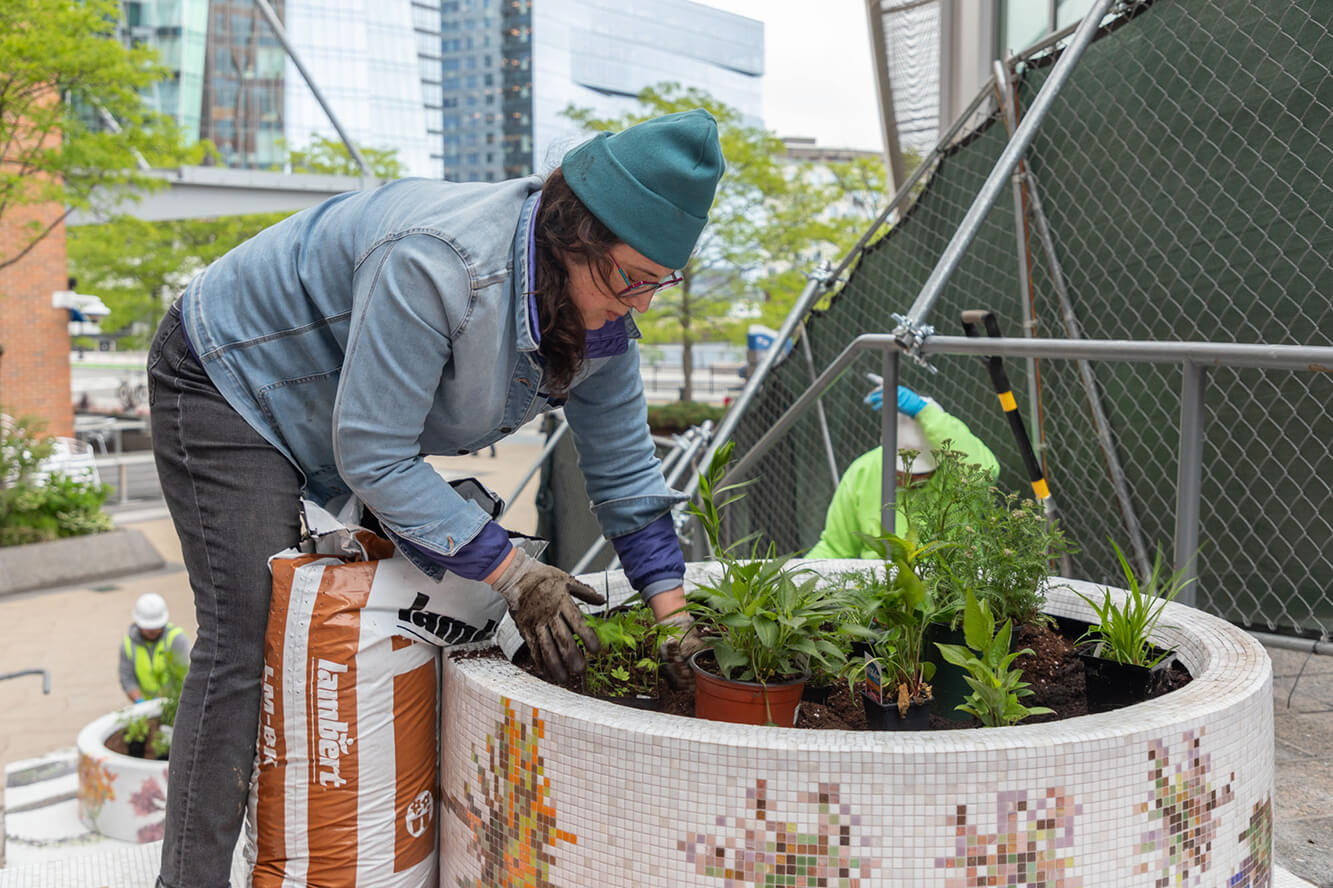
In Boston’s Seaport, Glovinski has cultivated another garden by the sea. By planting local favorites like violets and columbines in circular tiled planters along the Westport Stairs, she has created a terraced garden that benefits all, including our trusted pollinators. The concept of ‘loving up’ aptly suits Glovinski’s practice of cultivation, as well as the site itself, playfully pointing to an ascent of the staircase. Connecting Westport Park to the Harbor, she has transformed the Westport Stairs into an urban garden passage that brings the color and joy of summer year-round, encouraging a mindful community that cares for each other and nature.
